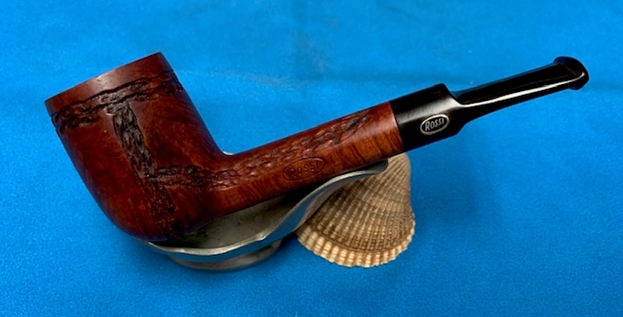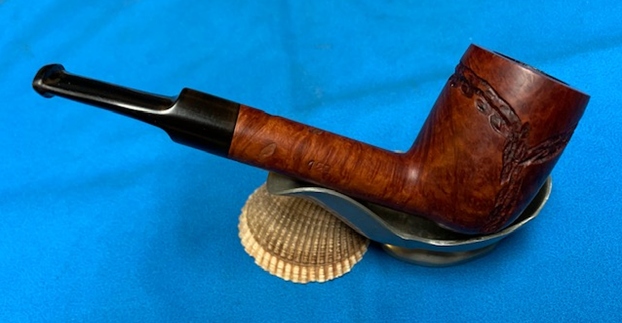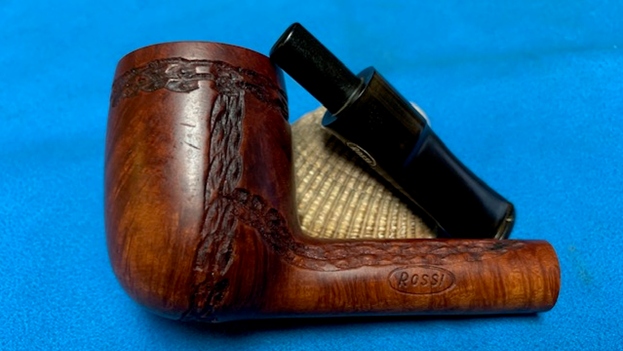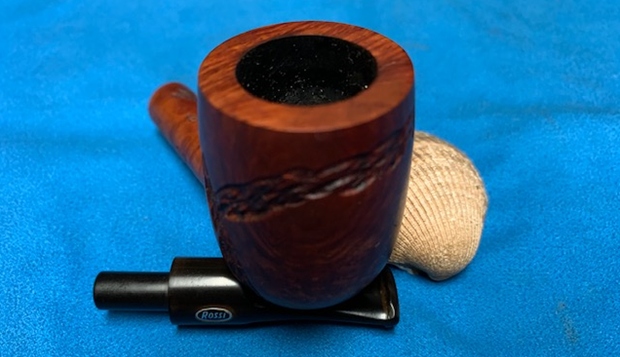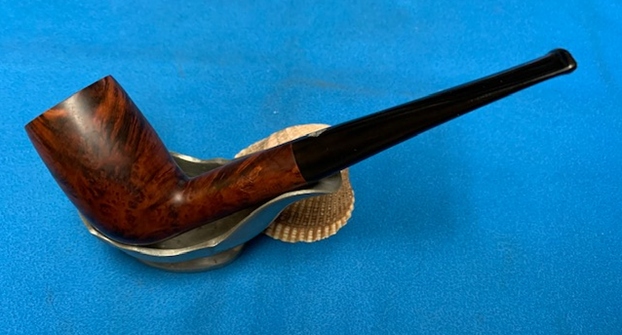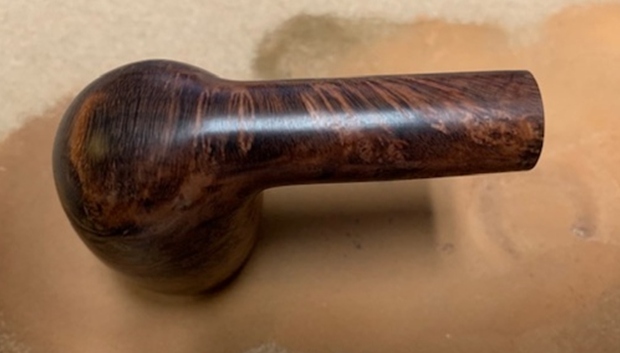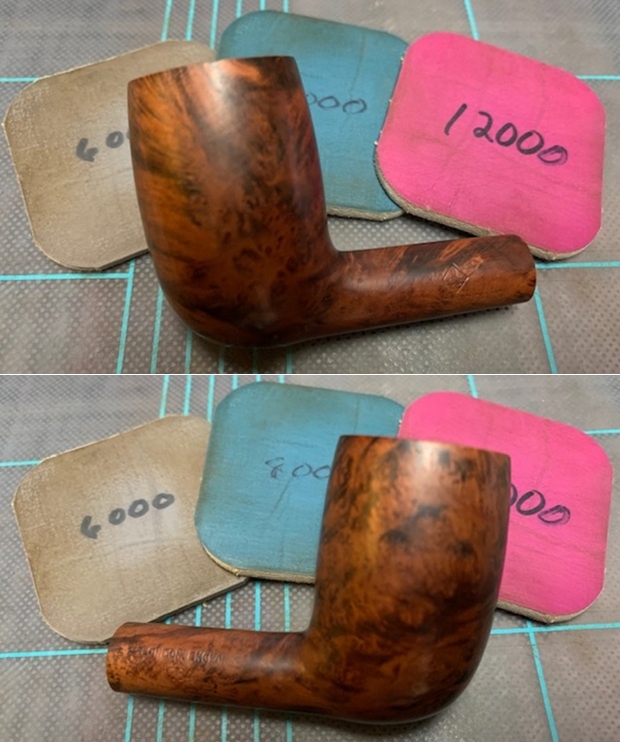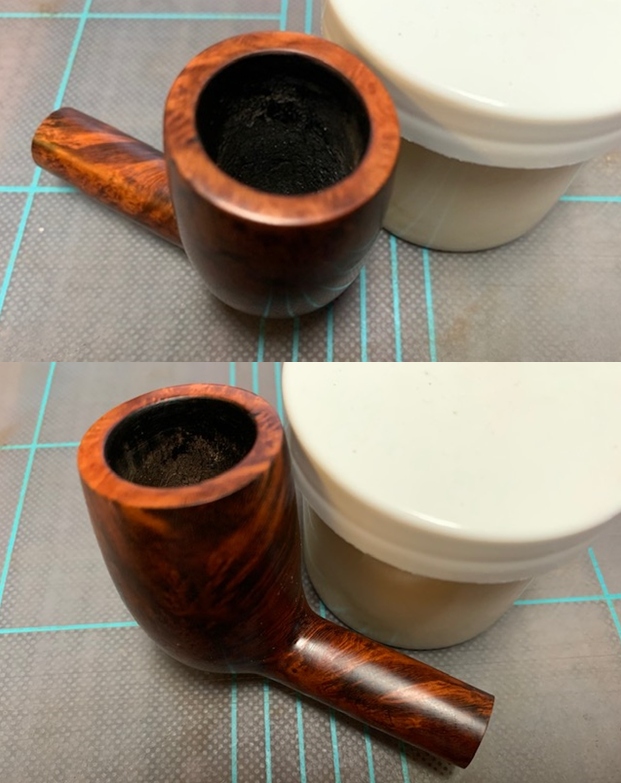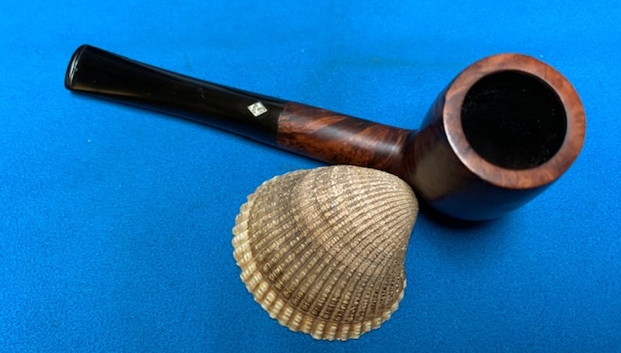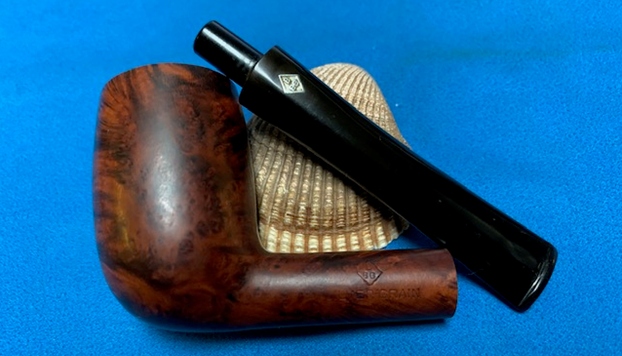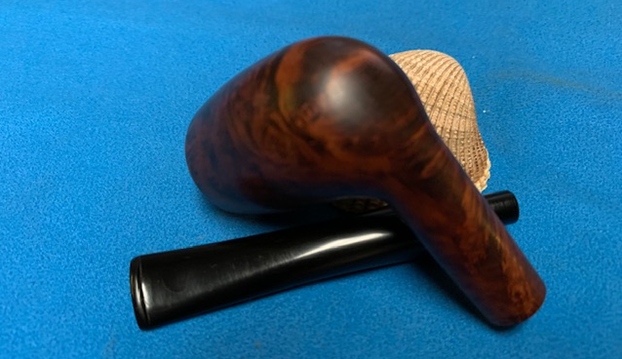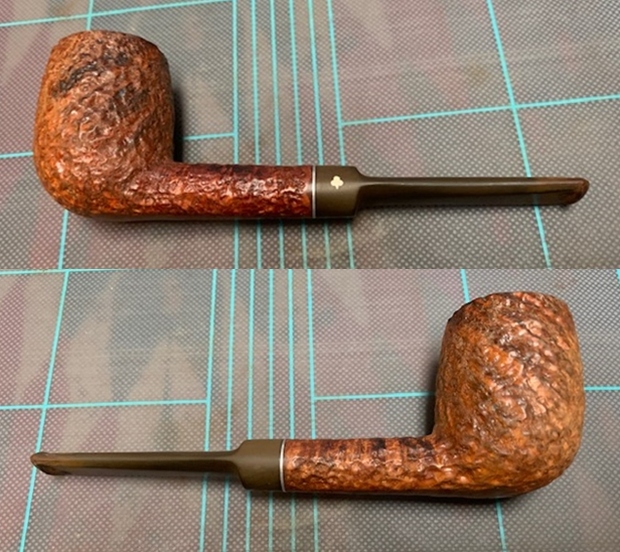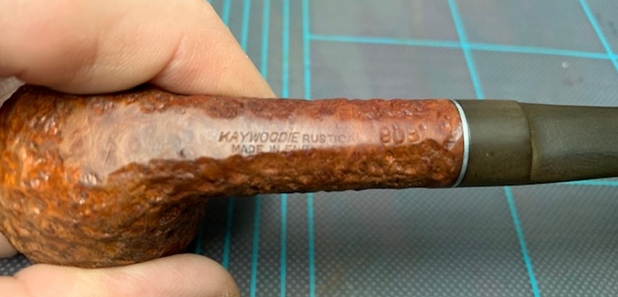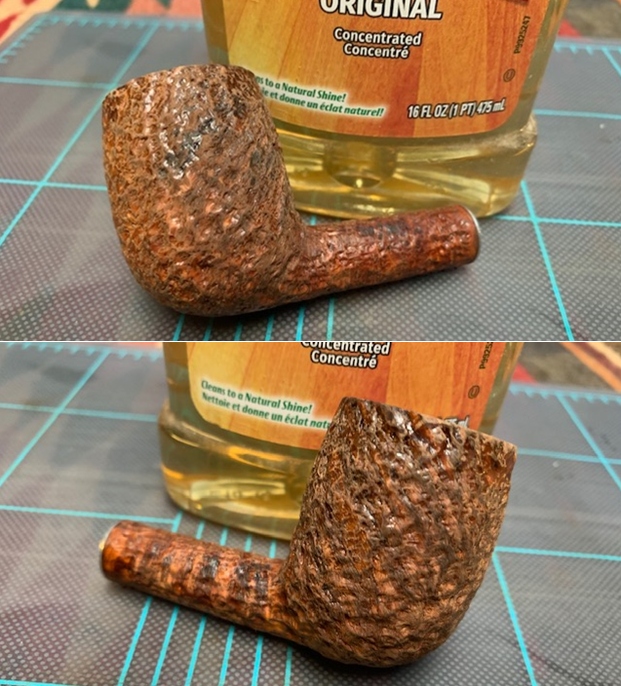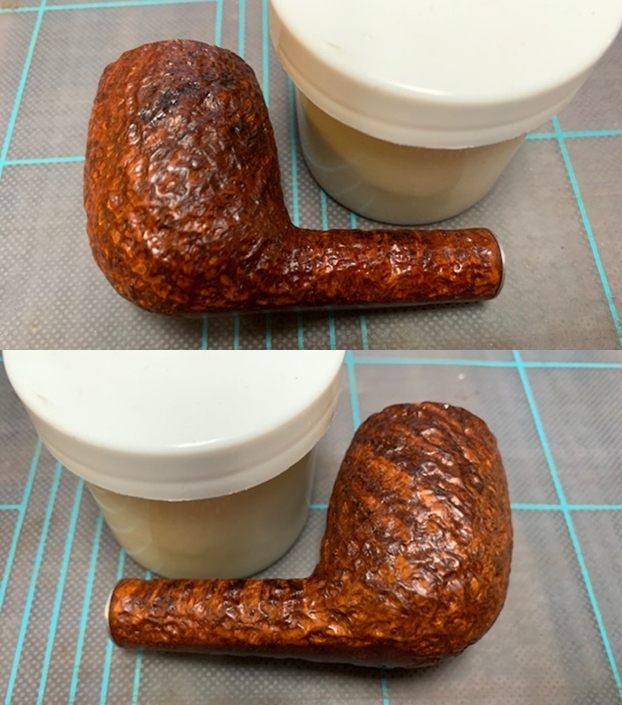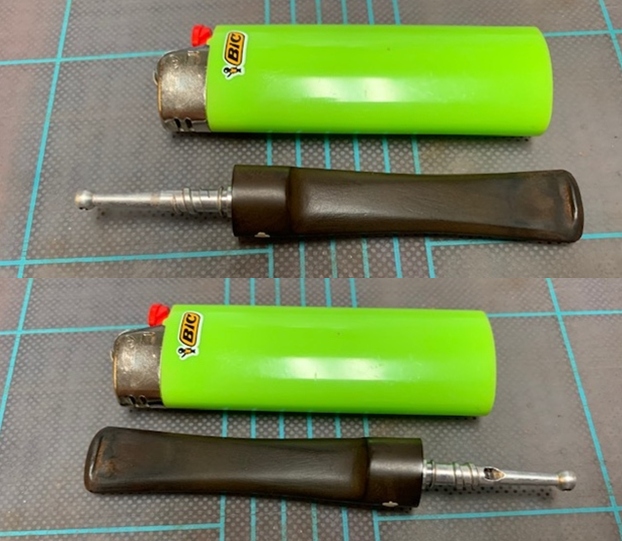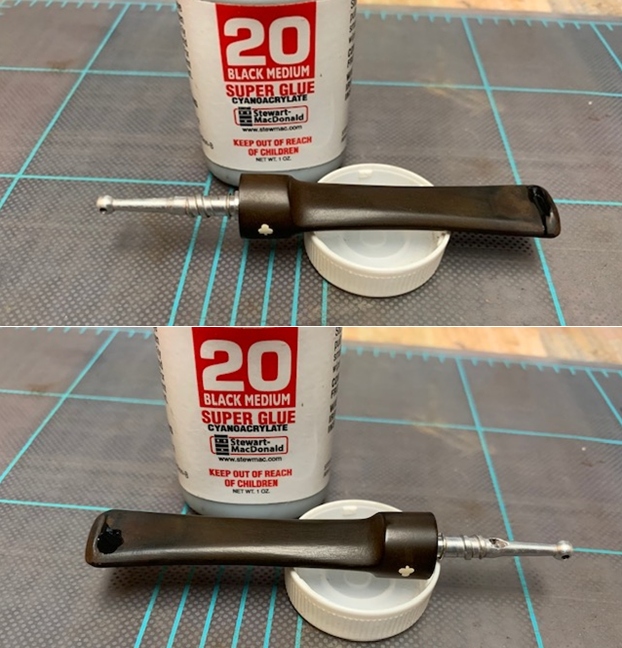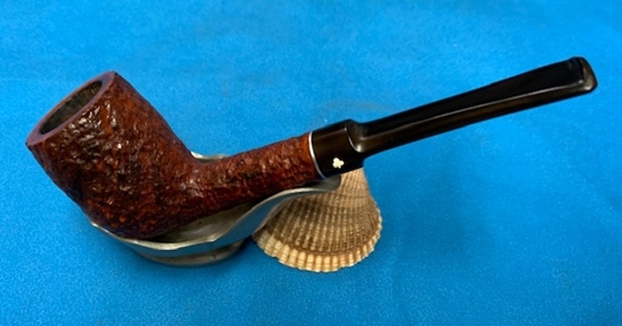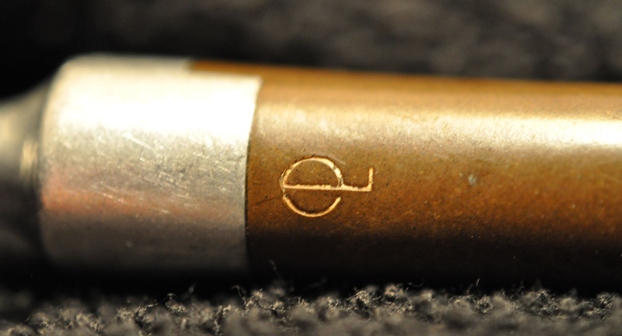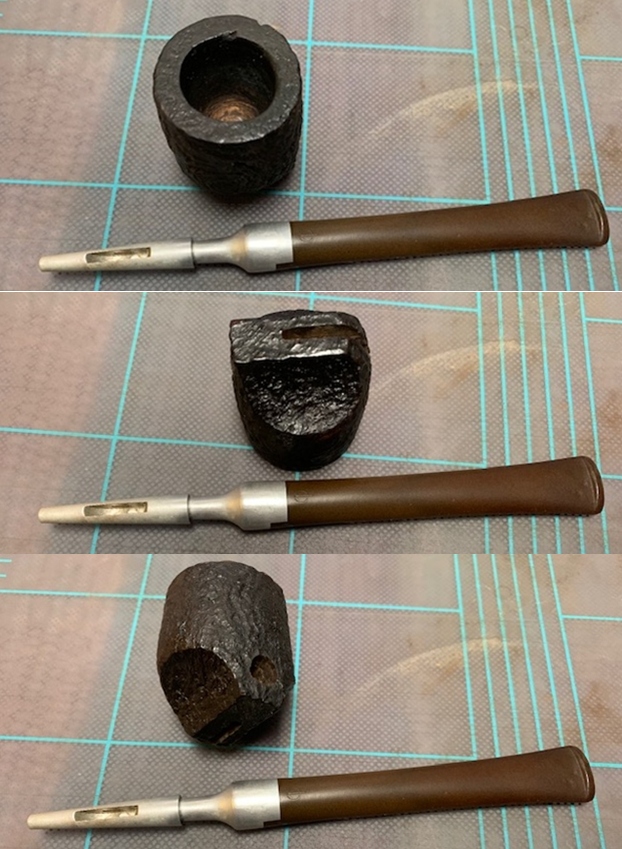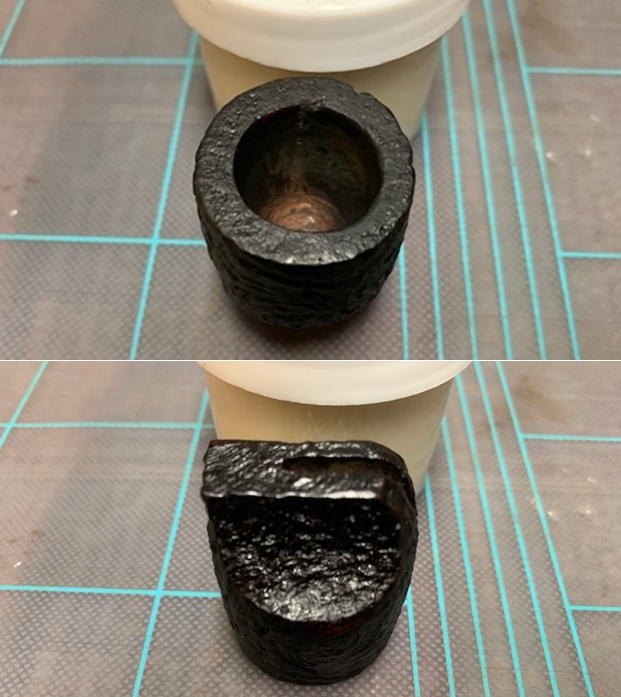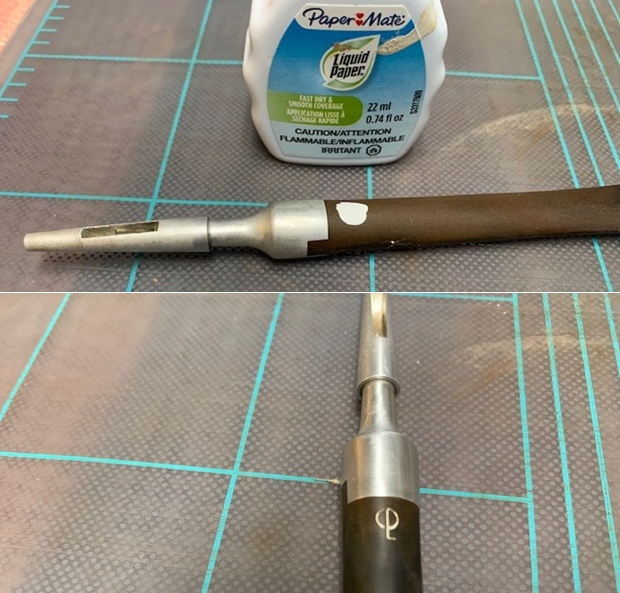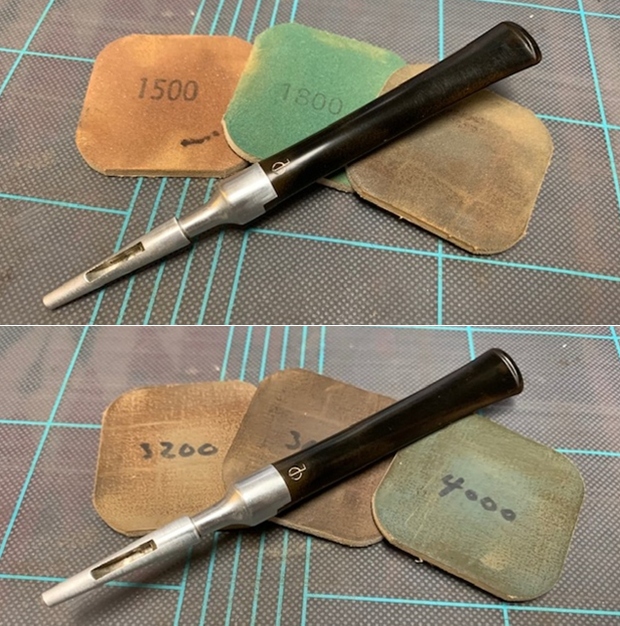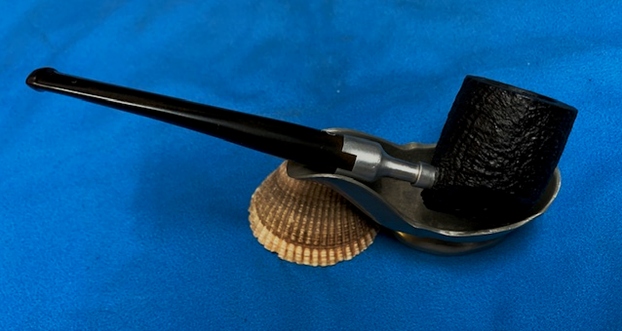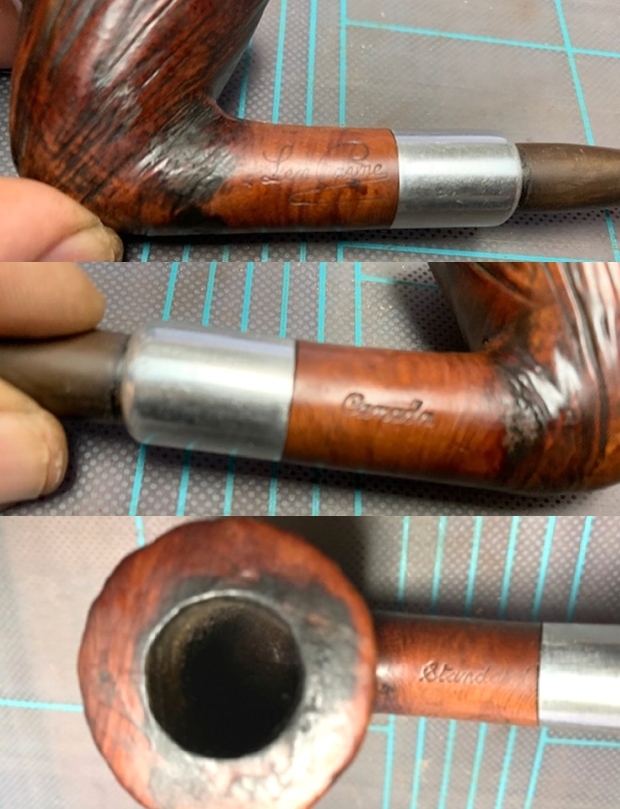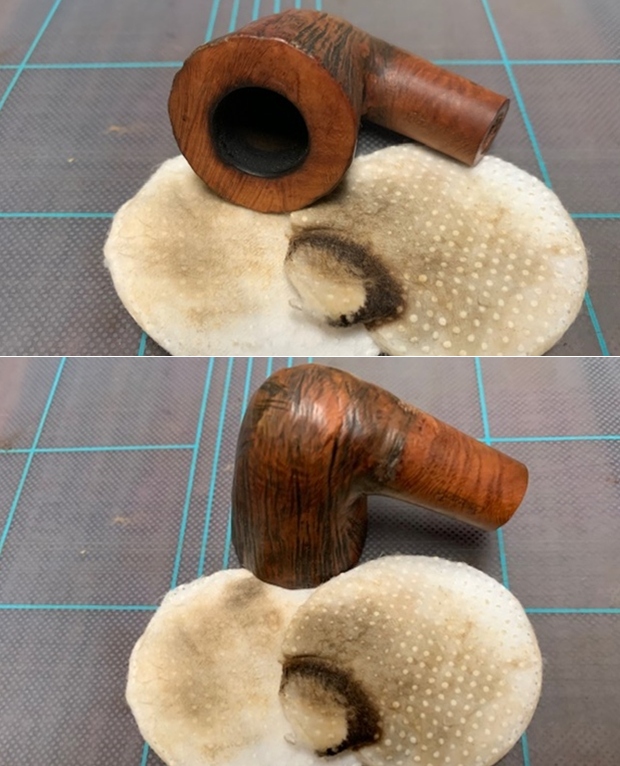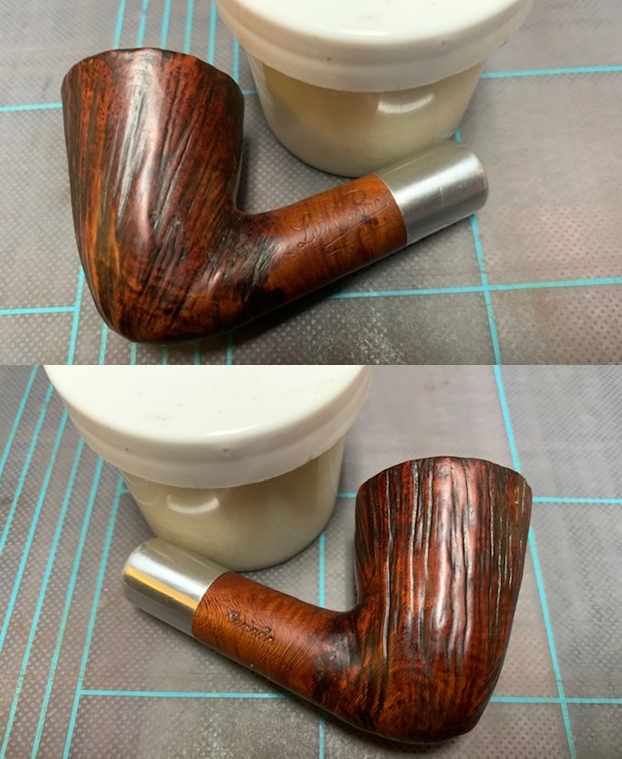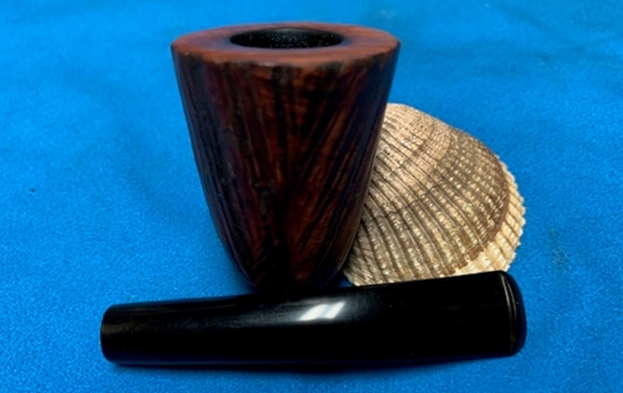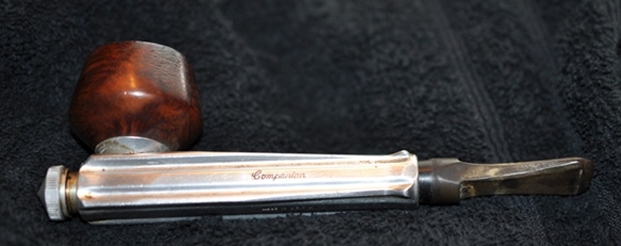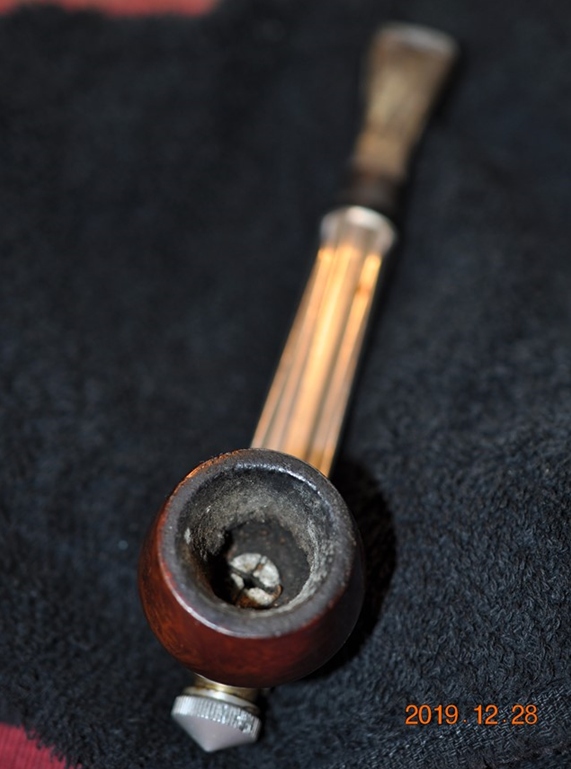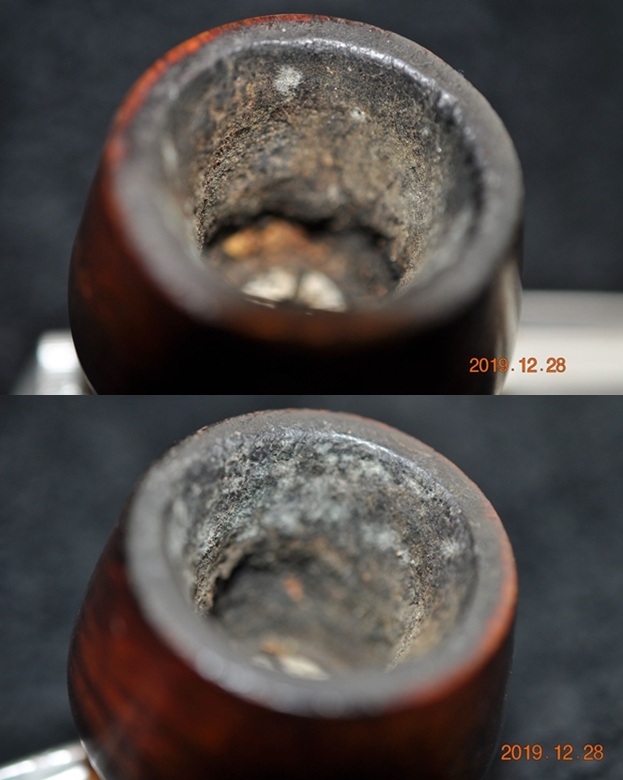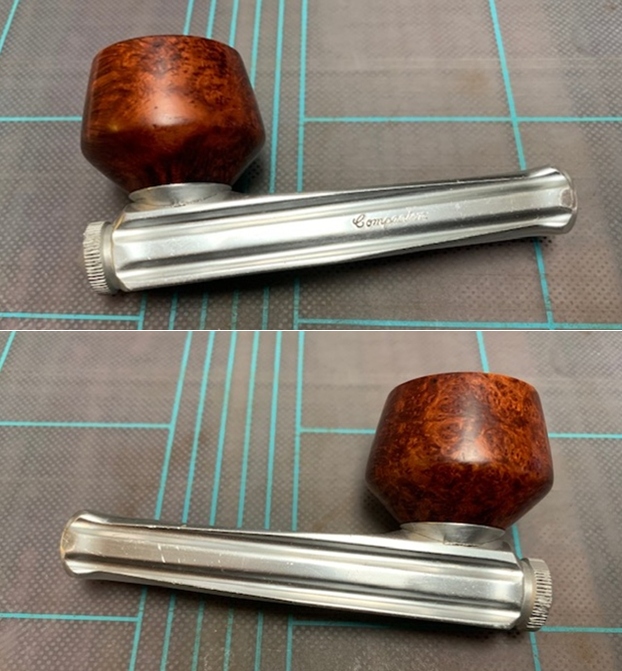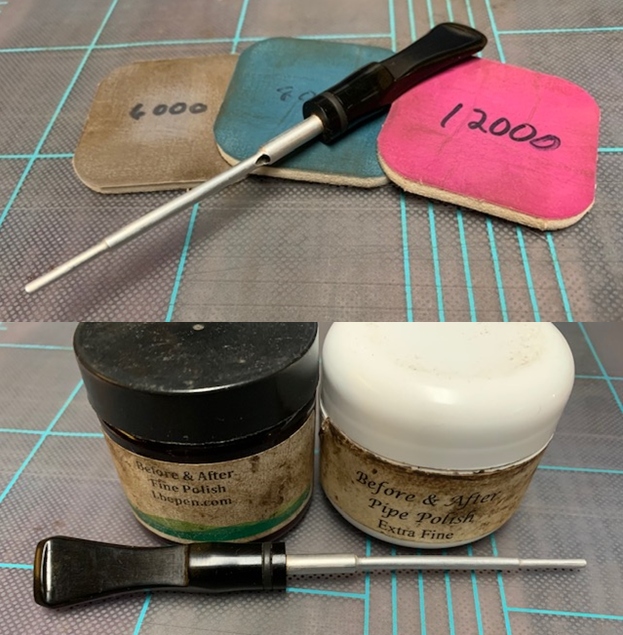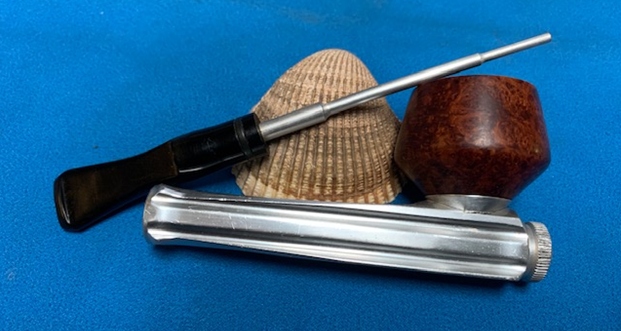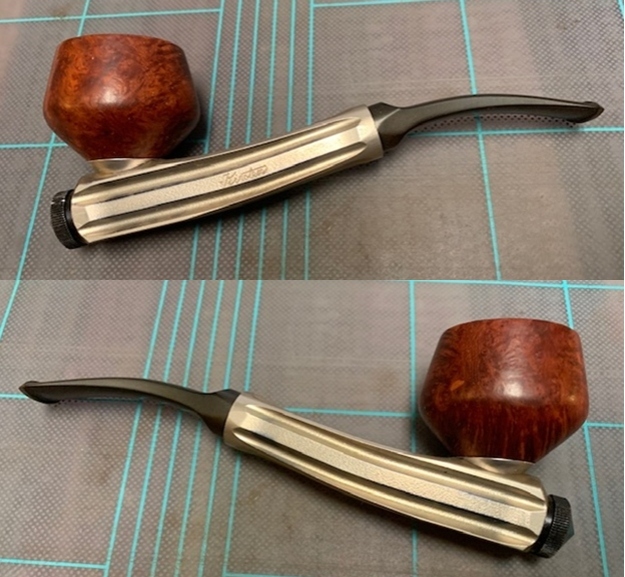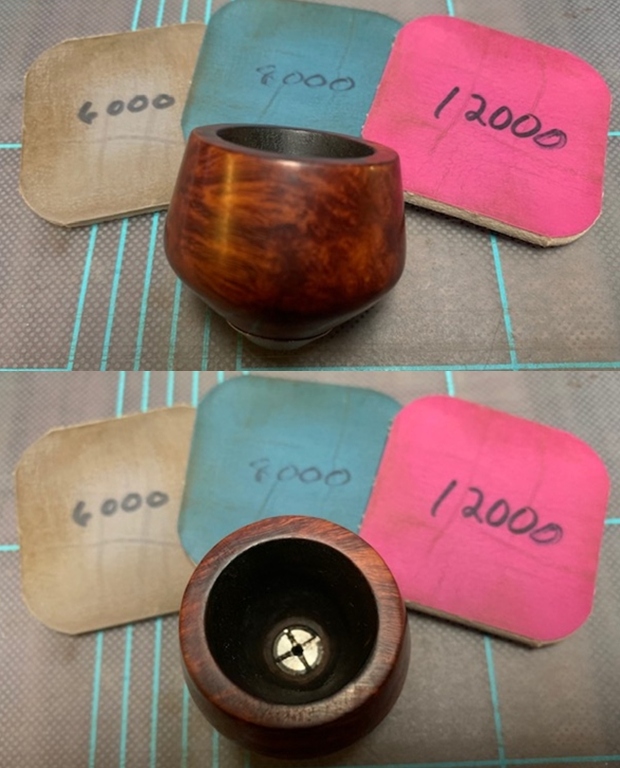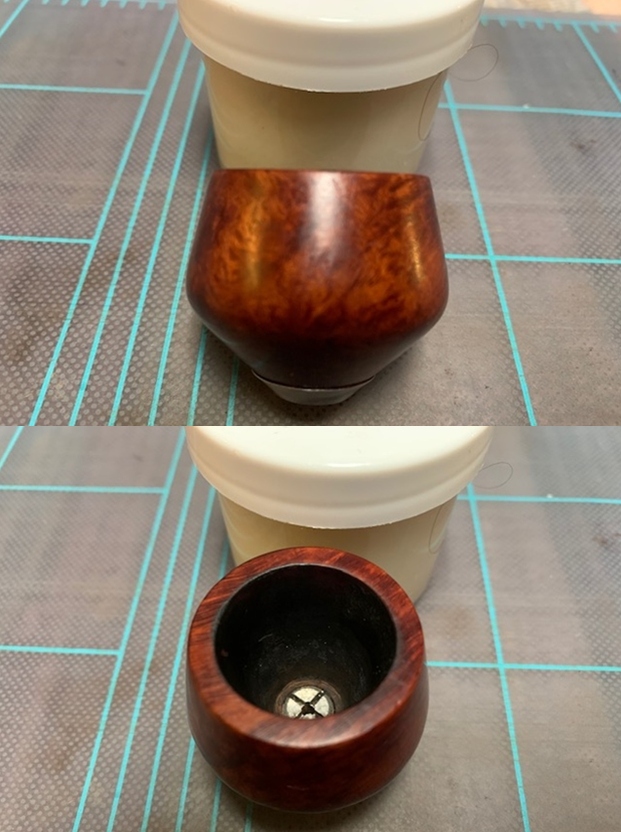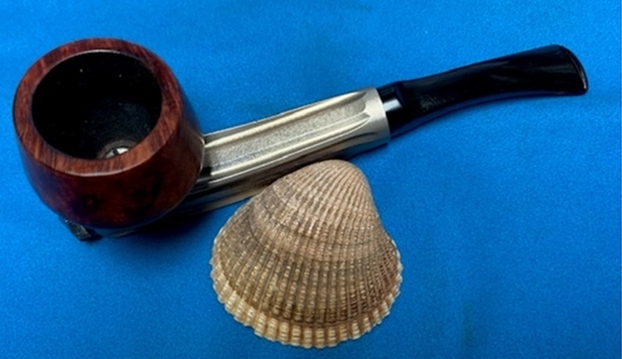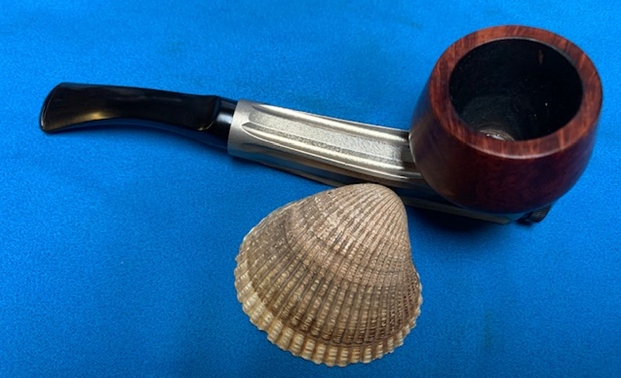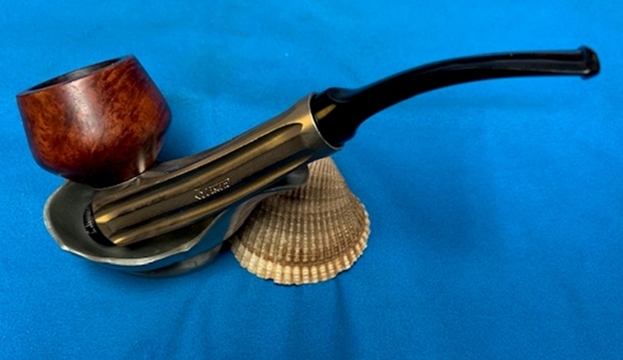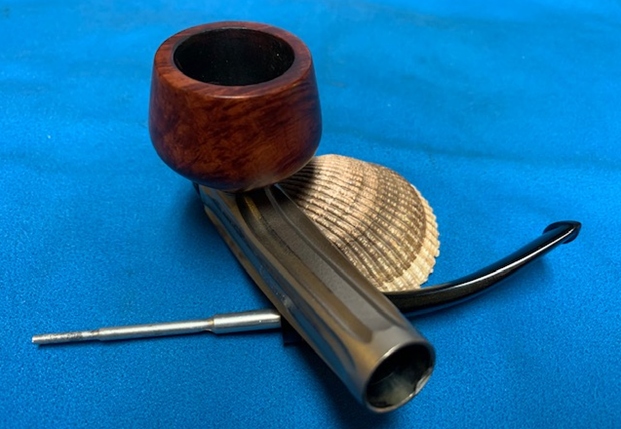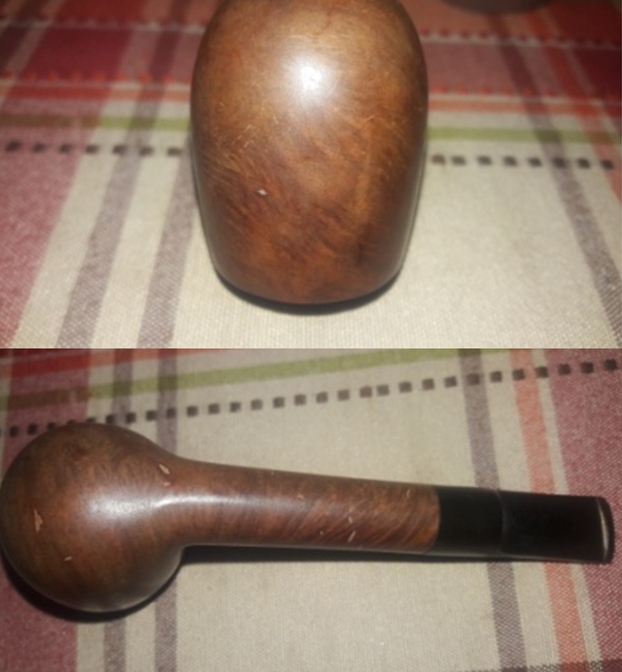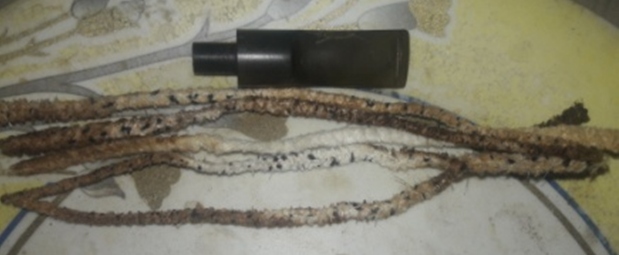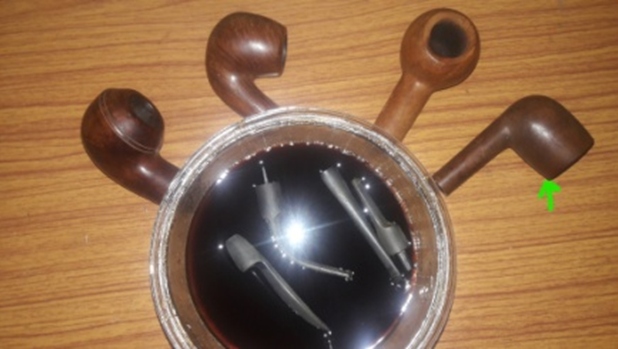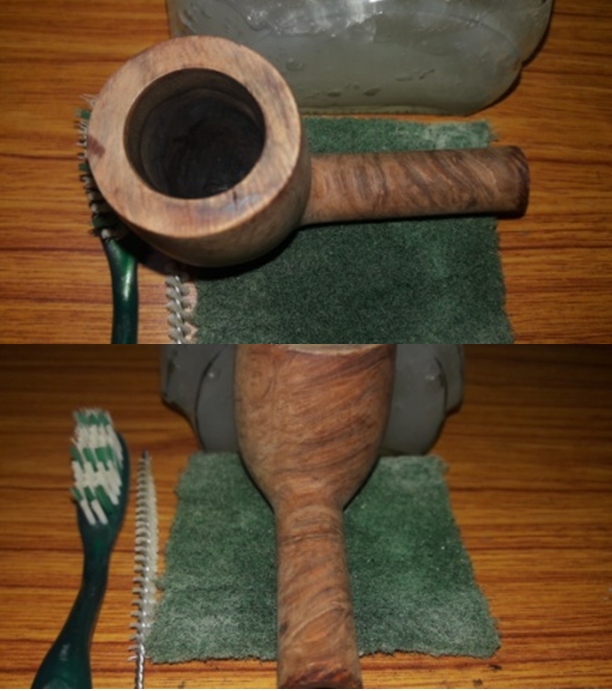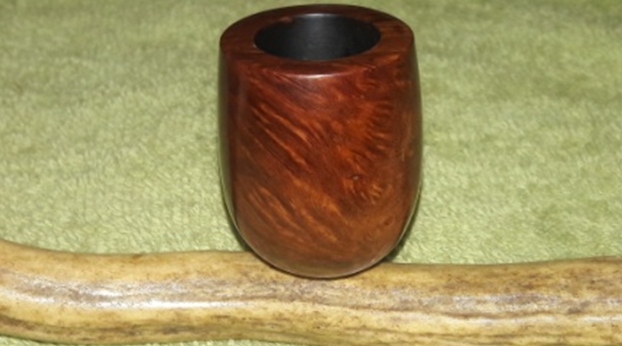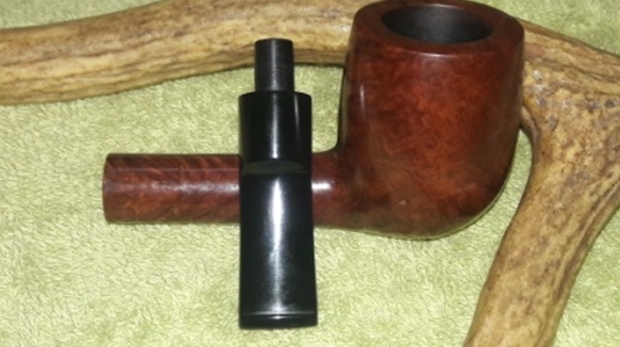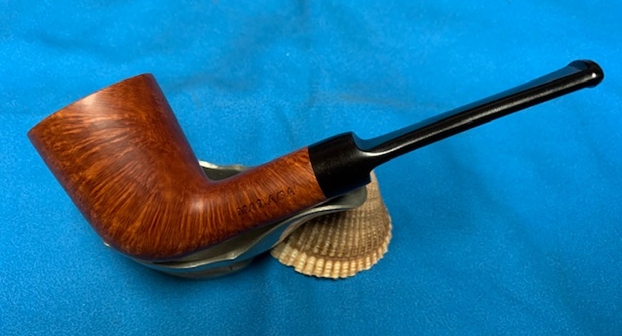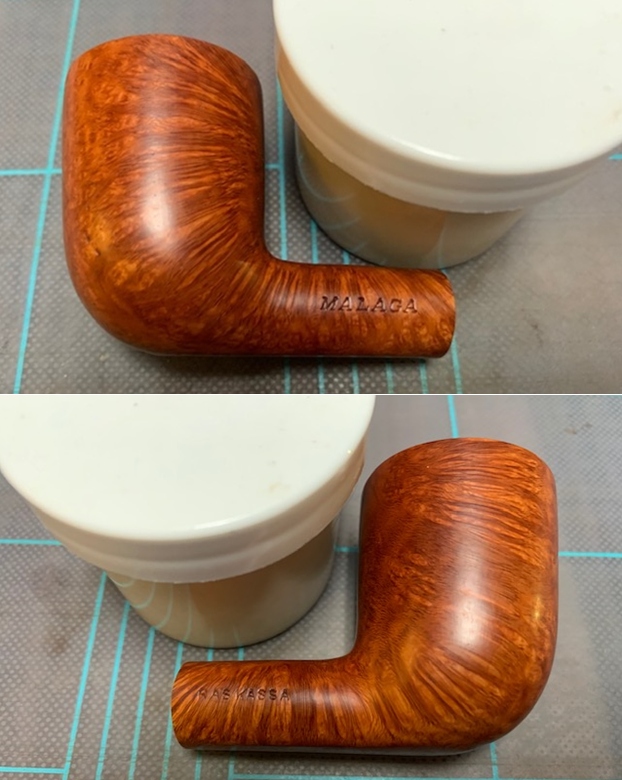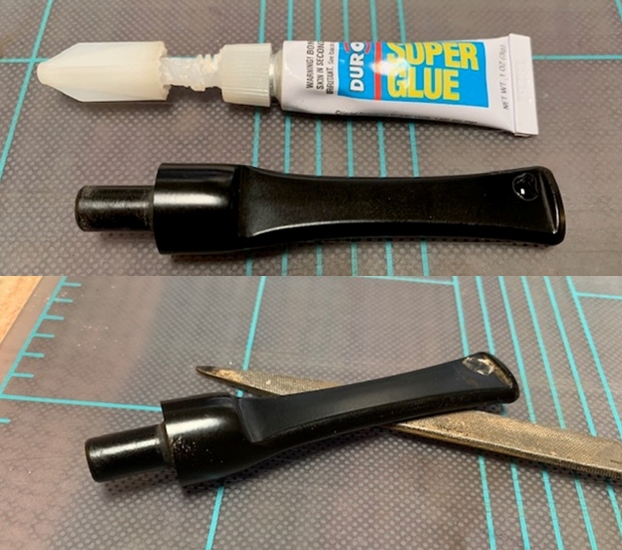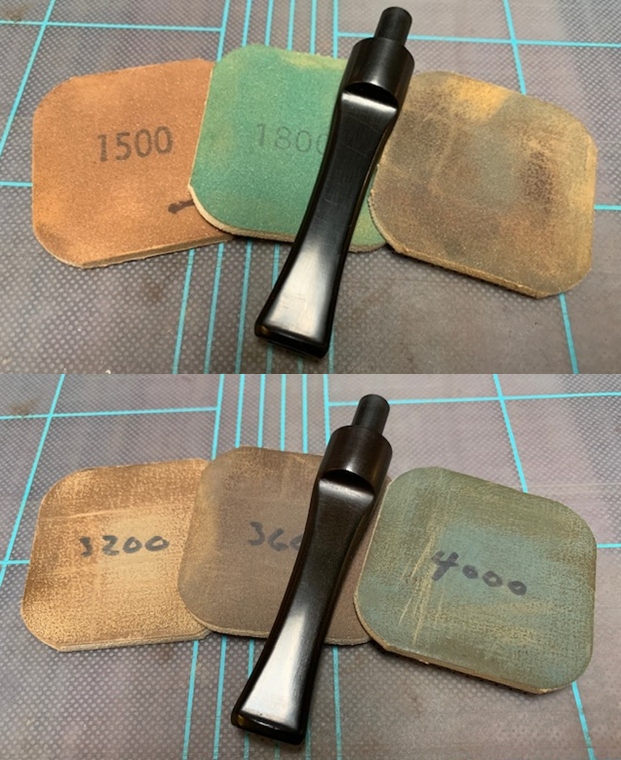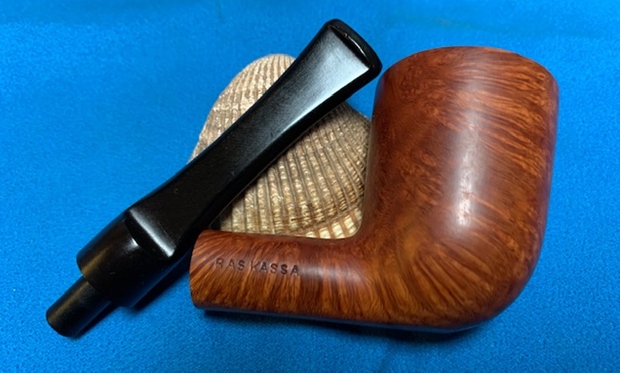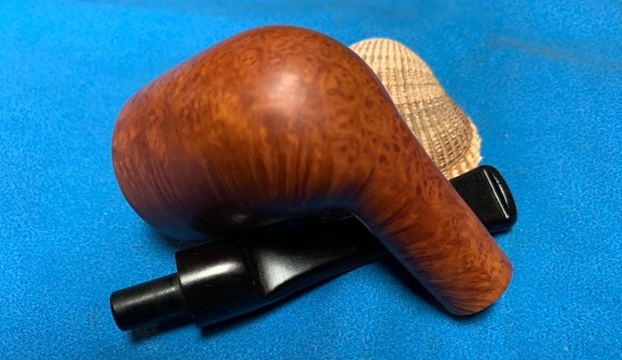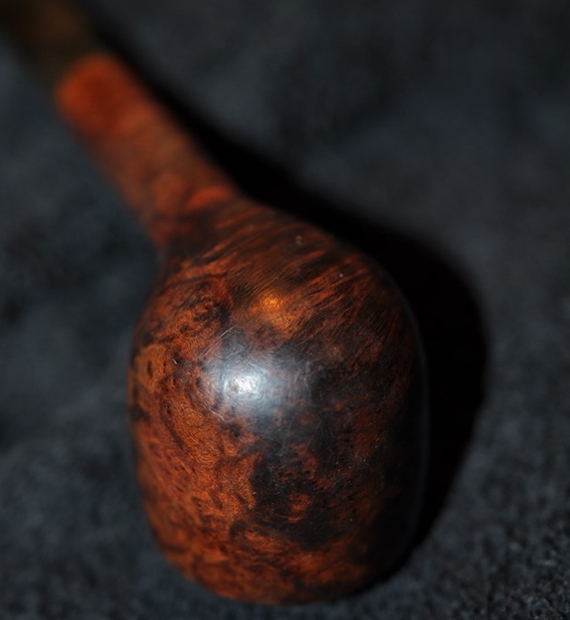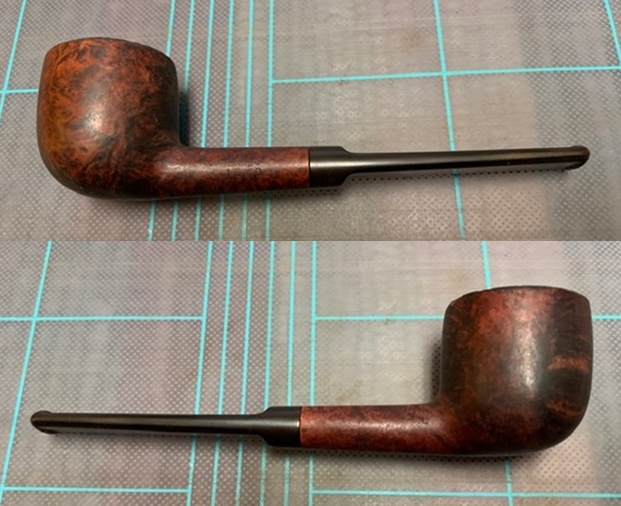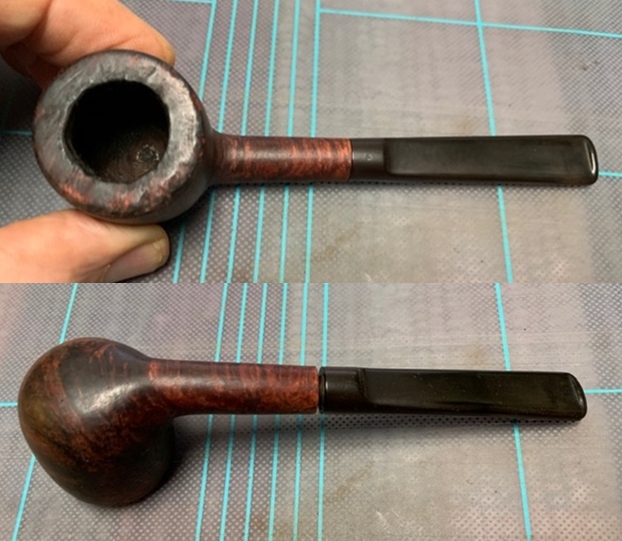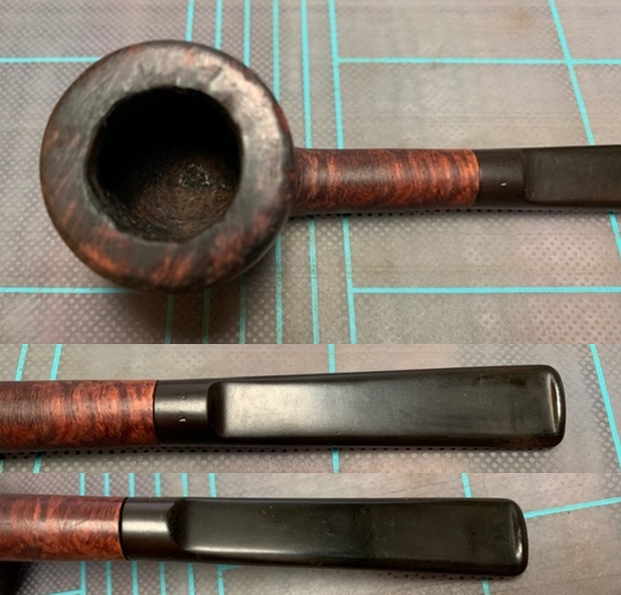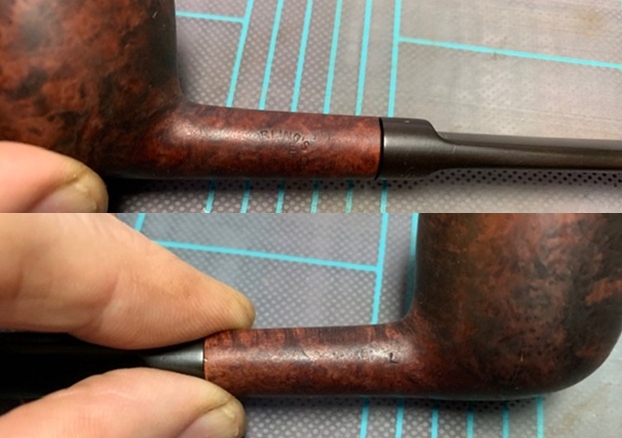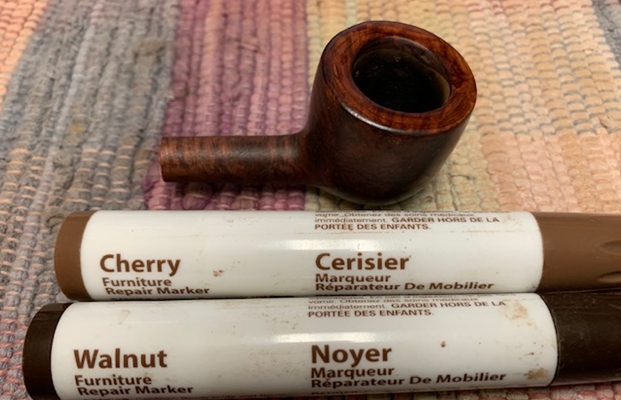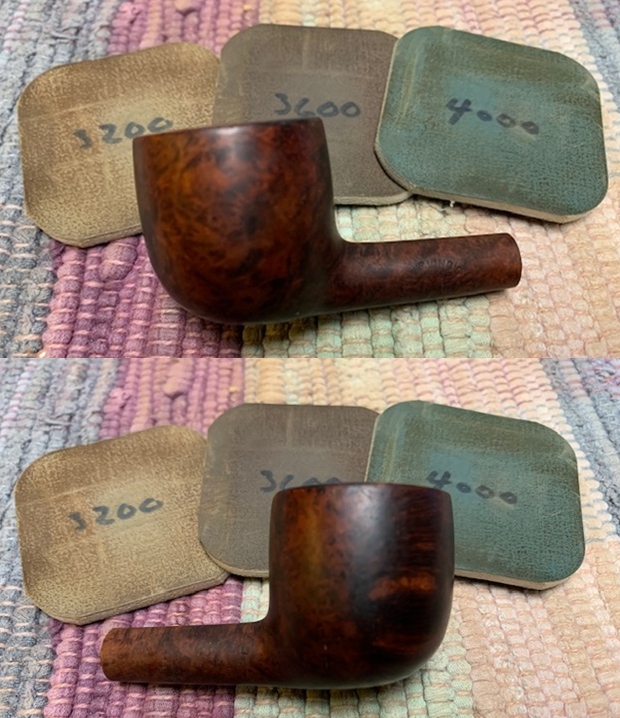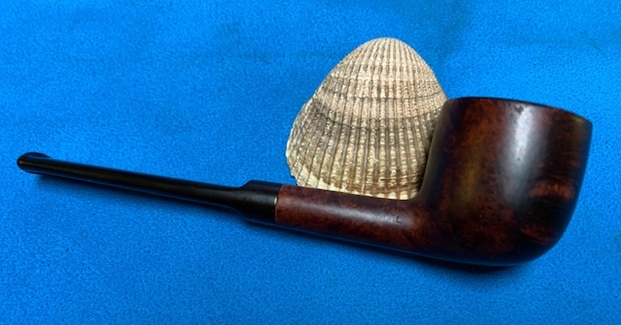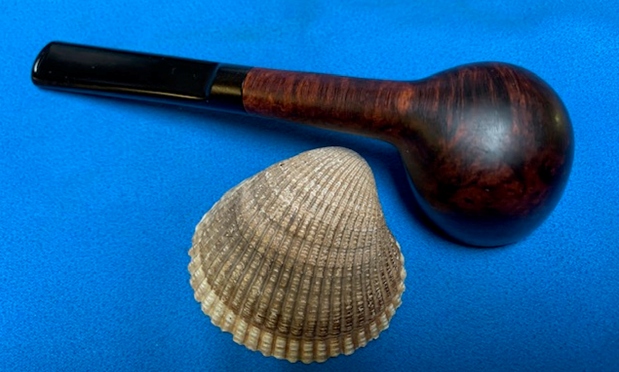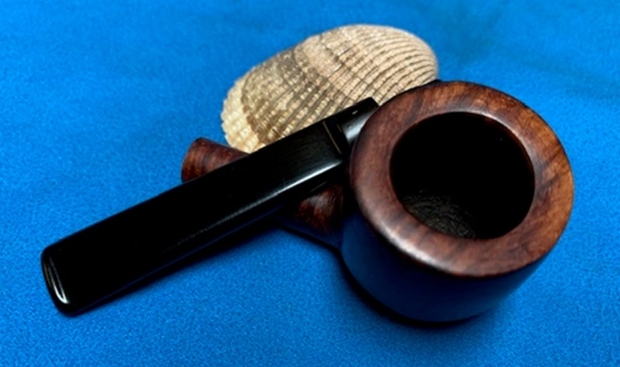Blog by Steve Laug
The next pipe on the work table came to me from the estate of a Vancouver pipe smoker whose widow left them with local Pipe Shop after he died. I was asked to clean them up and sell them for the shop as it has since closed. This Italian Made Rossi 129 Lovat is an interesting looking piece – a rope like rustication with the grain showing through underneath and a smooth rim top. The pipe is stamped on the left side and reads Rossi in an oval and on the right side it has the shape number 129. On the underside of the shank at the stem/shank junction it was stamped Italy. The finish was dull and lifeless with a lot of grime ground into the briar. The bowl was heavily caked with a lava coat on the top of the rim. It was hard to tell how the inner and outer edge of the rim actually looked until the bowl was reamed. The rustication around the bowl was filled in with dust and debris. There were quite a few fills on the shank top and underside. The stem was oxidized, calcified and had tooth chatter and marks on the top and underside near the button. It had promise but it was very dirty. I took some photos of the pipe when I received it. 
 I turned to Pipephil’s site (http://www.pipephil.eu/logos/en/logo-n1.html#ninorossi) to see what I could find out about the brand. I found a photo and listing for the brand I was working on. The following screen capture shows the stamping that is the same as the one I am working on.
I turned to Pipephil’s site (http://www.pipephil.eu/logos/en/logo-n1.html#ninorossi) to see what I could find out about the brand. I found a photo and listing for the brand I was working on. The following screen capture shows the stamping that is the same as the one I am working on. I turned to Pipedia (https://pipedia.org/wiki/Rossi) and read the section on the rough outline on history of the brand. It is a great read. Take time to have a look at it if you are interested. I am including a section of the article that helps with dating the pipes.
I turned to Pipedia (https://pipedia.org/wiki/Rossi) and read the section on the rough outline on history of the brand. It is a great read. Take time to have a look at it if you are interested. I am including a section of the article that helps with dating the pipes.
From, approximatively, Twenties, Rossi pipes were marked with “FRB” (Fratelli Rossi Barasso) or “MFRB” (Manifattura Fratelli Rossi Barasso), into an oval and above “OLD BRIAR” (or similar – sometimes, there was also “MFD. BY ROSSI”, as “Manufactured by Rossi”); on the stem, there was generally the “R” letter in circle. However, “FRB OLD BRIAR” was mantained for the “traditional pipes” (for cheap models – see below), surely, to Sixties.
From, approximatively, the fiftieth anniverary (1936), pipes were marked with “Rossi” (in cursive font), with model name just under it; on the stem, there was “ROSSI” (for expensive models like “extra”, which had the best quality; “racine”, which was rusticated by hand; “extra grain”, which was accurately sandblasted; “super”, which had the best briar selection, and a limited production; “fiamma”, which was the best selection of Sardinia and Greece briar, and a very limited production) or “R” in circle (for unexpensive models like “standard”, “grana” and “FRB”).
From, approximatively, Seventies, until 1985, Rossi pipes were marked with “ROSSI”, into an oval (sometimes there was also “ITALY” on the shank); on the stem, there was “ROSSI”. In these years, appeared the signature “Nino Rossi” (in cursive font): he was the last heir of the factory.
When Savinelli took back the production, it is said that first pipes had a twinbore mouthpiece, with “ROSSI” on the stem, and they were marked with “ROSSI” on the shank. Today most of them had 6 mm or 9 mm adapter (also, for the most part, the stem was made by methacrylate, always with “Rossi” on the side).
I think that this places the pipe in the 1970-1985 period as it is stamped Rossi in an oval and has the stamping Italy on the underside of the shank. Now it was time to work on the pipe.
I had sent the batch of pipes from the shop to my brother Jeff in Idaho and he had cleaned them up for me. It was several years ago now that he sent them back to me and I am just now getting to finish them. He reamed them with a Pipnet Reamer and cleaned up the reaming with a Savinelli Fitsall pipe knife. He had scrubbed the exterior of the bowl with Murphy’s Oil Soap and a tooth brush and rinsed it off with warm water to remove the grime in the rustication. He cleaned the internals of the shank and stem with alcohol, cotton swabs and pipe cleaners to remove the tarry residue and oils in the shank and airway. He soaked the stem in Before & After Deoxidizer to remove the oxidation on the stem surface. When it arrived here on my work table I took photos of the pipe before I started my part of the restoration. 
 The rim top looked far better but there was some darkening on the surface as well as a flaw in the briar on the left front. The inner edge of the rim was damaged and showed some nicks and cuts. The stem look good but there was some heavy oxidation and there were tooth marks and chatter on both sides near the button. The underside was worse than the topside.
The rim top looked far better but there was some darkening on the surface as well as a flaw in the briar on the left front. The inner edge of the rim was damaged and showed some nicks and cuts. The stem look good but there was some heavy oxidation and there were tooth marks and chatter on both sides near the button. The underside was worse than the topside.  I took a photo of the stamping on the left side of the shank. I forgot to take photos of the shank number on the right side of the shank and the underside as well. The stamping is clear and readable and reads as noted above.
I took a photo of the stamping on the left side of the shank. I forgot to take photos of the shank number on the right side of the shank and the underside as well. The stamping is clear and readable and reads as noted above. I took the stem off the pipe and took a photo of the parts to show the look of the pipe as a whole.
I took the stem off the pipe and took a photo of the parts to show the look of the pipe as a whole. I topped the bowl on a topping board with 220 grit sandpaper and then worked on the inner edge of the rim with a folded piece of 220 grit sandpaper to give it a slight bevel. Once it is finished the rim top and edge looks much better.
I topped the bowl on a topping board with 220 grit sandpaper and then worked on the inner edge of the rim with a folded piece of 220 grit sandpaper to give it a slight bevel. Once it is finished the rim top and edge looks much better.  I filled in the flaw in the rim top with clear super glue. I topped it again once the glue had cured to smooth it out. The rim top looks very good.
I filled in the flaw in the rim top with clear super glue. I topped it again once the glue had cured to smooth it out. The rim top looks very good. 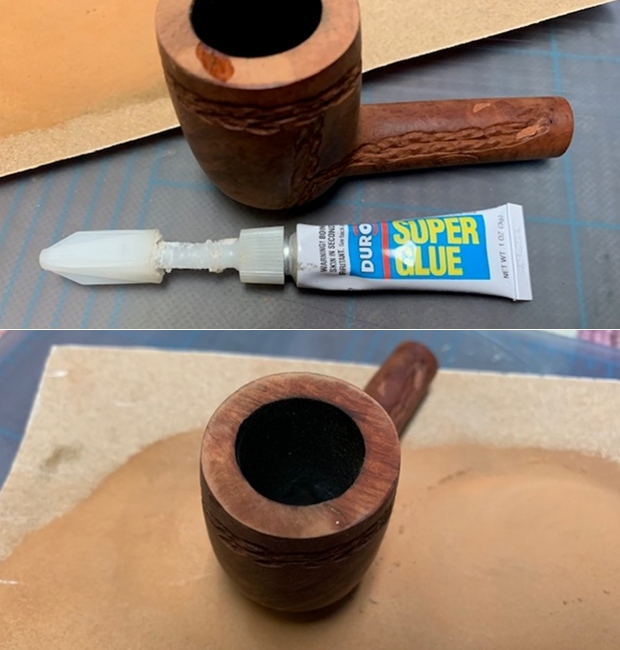 I polished the newly topped rim and the bowl with micromesh sanding pads. I sanded it with 1500-12000 grit pads and wiped it down between each pad with a damp cloth. By the end you can see the shine on the briar.
I polished the newly topped rim and the bowl with micromesh sanding pads. I sanded it with 1500-12000 grit pads and wiped it down between each pad with a damp cloth. By the end you can see the shine on the briar. 




 I rubbed the bowl and shank down with Before & After Restoration Balm. I worked it into the surface of the bowl sides and shank with my fingertips and a horse hair shoe brush to clean, enliven and protect the briar. I let the balm sit for a little while and then buffed with a cotton cloth to raise the shine. You can see the underlying grain begin to show through the rustication.
I rubbed the bowl and shank down with Before & After Restoration Balm. I worked it into the surface of the bowl sides and shank with my fingertips and a horse hair shoe brush to clean, enliven and protect the briar. I let the balm sit for a little while and then buffed with a cotton cloth to raise the shine. You can see the underlying grain begin to show through the rustication.

 I filled in the remaining tooth mark with black super glue. Once it cured I smoothed out the surface of the repair with a needle file. (I forgot to take photos of the filing but I did it before I sanded it with 220 grit sandpaper.)
I filled in the remaining tooth mark with black super glue. Once it cured I smoothed out the surface of the repair with a needle file. (I forgot to take photos of the filing but I did it before I sanded it with 220 grit sandpaper.)  I sanded out the repair with 220 grit sandpaper to blend it into the surface of the surrounding vulcanite. I started polishing the stem with 400 grit wet dry sandpaper.
I sanded out the repair with 220 grit sandpaper to blend it into the surface of the surrounding vulcanite. I started polishing the stem with 400 grit wet dry sandpaper.  I polished the vulcanite stem with micromesh sanding pads – 1500-12000 grit pads. I wiped it down with a damp cloth after each sanding pad. I used Before & After Pipe Polish – both Fine and Extra Fine to further polish the stem.
I polished the vulcanite stem with micromesh sanding pads – 1500-12000 grit pads. I wiped it down with a damp cloth after each sanding pad. I used Before & After Pipe Polish – both Fine and Extra Fine to further polish the stem. 
 This Rossi 129 Rope Rusticated Lovat, an Italian made pipe from the local pipe shop estate that I am restoring and selling for them. It has turned out to be a great looking pipe. The rope rustication on the medium brown finish is in excellent condition and works well with the polished vulcanite saddle stem. I put the stem back on the bowl and carefully buffed the pipe with Blue Diamond on the buffing wheel using a light touch on the briar. I gave the bowl and the stem multiple coats of carnauba wax on the buffing wheel and followed that by buffing the entire pipe with a clean buffing pad. I hand buffed the pipe with a microfiber cloth to deepen the shine. The finished Rossi Lovat fits nicely in the hand and feels great. Give the finished pipe a look in the photos below. The dimensions of the pipe are Length: 5 inches, Height: 1 ¾ inches, Outside diameter of the bowl: 1 ¼ inches, Chamber diameter: ¾ of an inch. If you are interested in adding this pipe to your collection send me a message or an email. I have a variety of brands to work on from the shop. Perhaps one of those will catch your attention. Thanks for reading this blog and my reflections on the pipe while I worked on it. This is an interesting estate to bring back to life.
This Rossi 129 Rope Rusticated Lovat, an Italian made pipe from the local pipe shop estate that I am restoring and selling for them. It has turned out to be a great looking pipe. The rope rustication on the medium brown finish is in excellent condition and works well with the polished vulcanite saddle stem. I put the stem back on the bowl and carefully buffed the pipe with Blue Diamond on the buffing wheel using a light touch on the briar. I gave the bowl and the stem multiple coats of carnauba wax on the buffing wheel and followed that by buffing the entire pipe with a clean buffing pad. I hand buffed the pipe with a microfiber cloth to deepen the shine. The finished Rossi Lovat fits nicely in the hand and feels great. Give the finished pipe a look in the photos below. The dimensions of the pipe are Length: 5 inches, Height: 1 ¾ inches, Outside diameter of the bowl: 1 ¼ inches, Chamber diameter: ¾ of an inch. If you are interested in adding this pipe to your collection send me a message or an email. I have a variety of brands to work on from the shop. Perhaps one of those will catch your attention. Thanks for reading this blog and my reflections on the pipe while I worked on it. This is an interesting estate to bring back to life.





